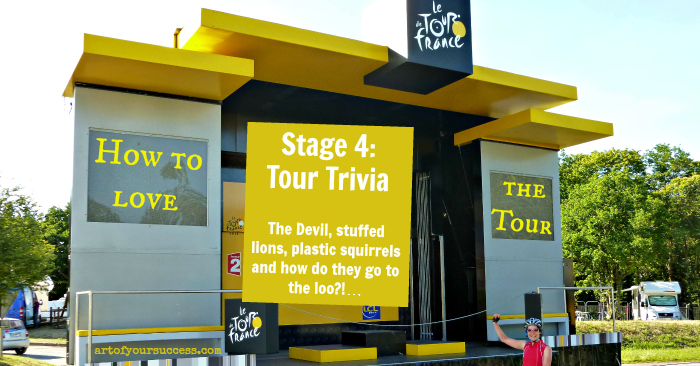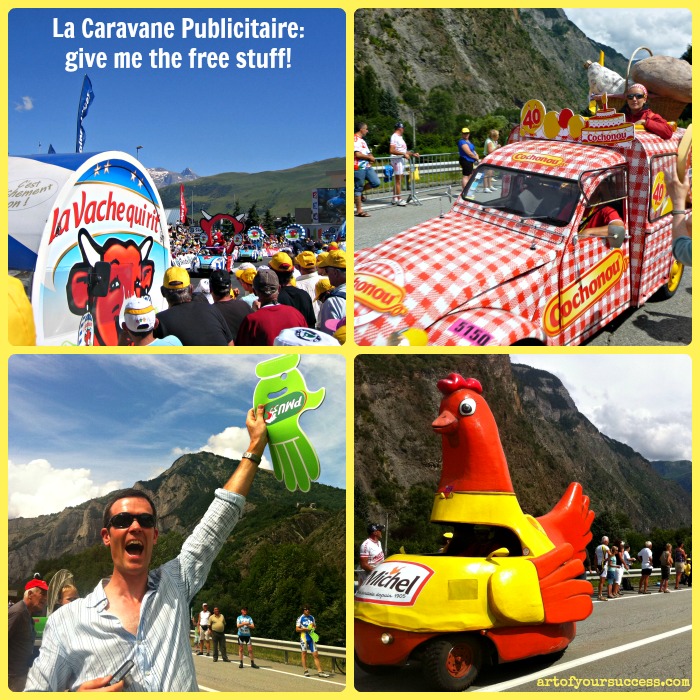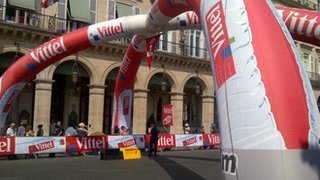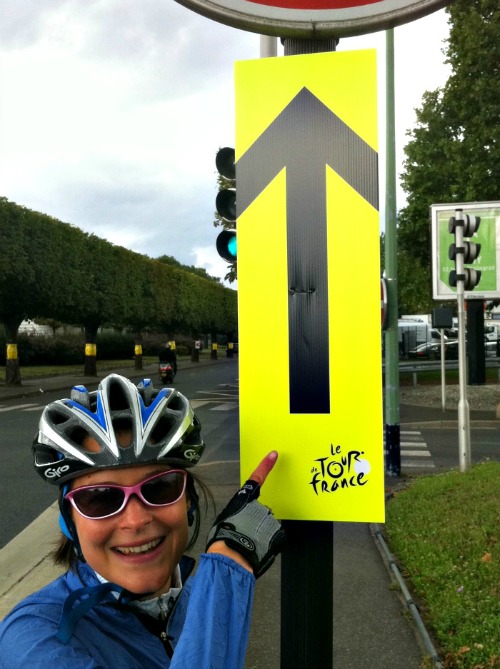
The Devil, stuffed lions, plastic squirrels and how do they go to the loo?!…
You’ve seen how much there is to the Tour – the jerseys, the tactics, the super fast racing. Now take it to the next level and get fully submersed, with full-on fascinating and fun Tour trivia.
The Devil
There are millions of Tour fanatics (are you one too yet?!) The most famous is ‘the Devil’ who seems to appear everywhere along the course and is always featured on TV
Dutch Corner
Alpe d’Huez, one of the Tour’s most iconic climbs, is also known to many as the Dutch Mountain. The Dutch won 8 of the first 14 finishes and have since adopted Alpe d’Huez, specifically bend number 7 (of the famous 21). There’s a church on the corner, supposedly built by a Dutch priest who was also a cycling fan and encouraged the Dutch to camp there. It’s all a bit lost in the mists of time/ crates of beer, and they arrive days before the Tour, camping out and wearing orange. I’ve been lucky enough to be cheered on by lots of them when I’ve cycled up Alpe d’Huez, both times just before the Tour does the climb.
Caravane Publicitaire
A parade of gaudy floats ahead of the riders, advertising to the crowds and giving out Tour-related tat (except in Paris – you’ve been warned!) Sounds unappealing til you’re roadside and suddenly find yourself screaming to be the one who gets the plastic squirrel (trust me!)…
Stuffed Lion for the Yellow Jersey
Sadly there isn’t a more meaningful reason why each stage’s Yellow Jersey winner is presented with a lion, other than it’s the logo of Credit Lyonnaise, the French bank which has sponsored the yellow jersey since 1987.
Etiquette
There are some unwritten rules in the Tour, like slowing down to let key riders catch up after a puncture or crash, and certainly not attacking when rivals are suffering from these problems. Often the main GC riders will control the peloton and tell them to slow in these situations. Bradley did this to good effect in 2012 when Cadel Evans and others had punctures after tacks were thrown in the road.
Going to the loo
Riders can do this on the go (slowing down), and again, others generally don’t overtake at this time. At other times the peloton agree to stop very briefly somewhere away from fans. This is a good moment for some panoramic shots from the cameras!
Musettes
How riders eat. They grab a small bag ‘musette’ from their team at the side of the road at a designated point each day. They’ll have energy bars and gels, drinks and sandwiches, burning 3 – 5,000 calories per stage, and more energy for mountain stages when they might burn up to 10,000 calories.
Flamme Rouge
In the Tour this is a red flag hanging off a read and white inflatable arch. It signals the final 1km of the stage, so is a cue for riders to put the hammer down even more than they are already to get to the finish!
Lanterne Rouge
Named after the red light fixed to the back of a train, this is the last-placed rider at the end of a Tour. The rider usually gets some publicity afterwards.
Time Limit
After every stage a time cut is made by taking the winner’s time and adding 10 to 20%. Riders who finish in outside this are not allowed to start the next day. Often in the mountain stages this is extended when a large group of riders (usually always containing the sprinters) all finish outside the time and are too numerous to eliminate.
Grande Boucle
What the French also call the Tour – the big loop. To finish with my favourite Tour trivia of all – the Tour reverses direction each year. So it either goes clockwise, taking in the Alps before the Pyrenees. Or anticlockwise, finishing with Pyrenees then Alps!
So I hope you’ve enjoyed revising or learning about the Tour, and get even more out of watching this thrilling event. Do ask any Tour questions you’ve still got, below! Vive le Tour!
If you’re now a TdF fan, you may like a Tour de France inspired t-shirt.
Recap all the How to love the Tour posts:





[…] you’re getting pretty pro now – read on for stage 4 on top Tour trivia – getting you to advanced level TdF understanding with fun facts like the lanterne rouge […]